Abstract
Studies of the water relations of potassium deficient sugarbeet plants (Beta vulgaris L.) revealed two factors for stomatal closure. One component of stomatal closure was reversible by floating leaf discs on distilled water to relieve the water deficit in the leaves; the other component was reversible in the light by floating the leaf discs on KCl solution for 1 hour or more. Potassium-activated stomatal opening in the light was observed when the guard cells were surrounded by their normal environment of epidermal and mesophyll cells, just as observed by previous workers for epidermal strips. Leaf water potentials, like stomatal apertures, appear to be strongly related to leaf potassium concentration. Potassium-deficient plants have a greatly decreased root permeability to water, and the implications of this effect on stomatal aperture and leaf water potential are discussed. In contrast, petiole permeability to water is unaffected by potassium treatment.
Full text
PDF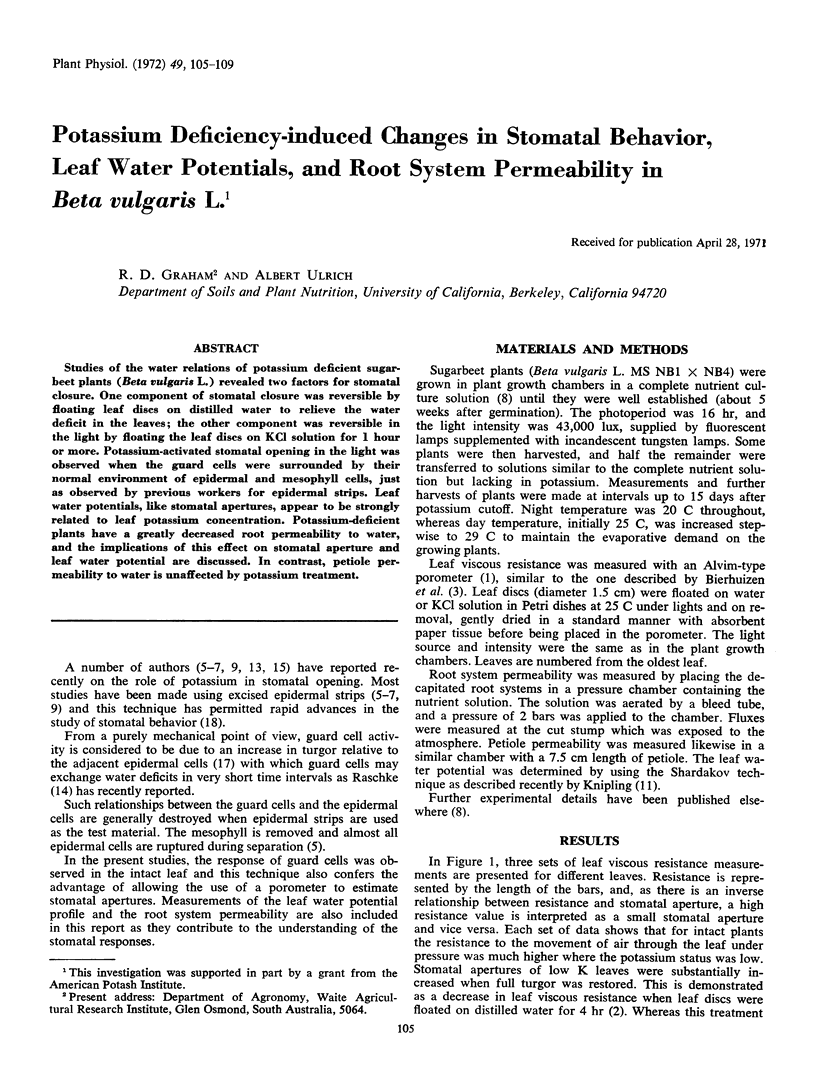
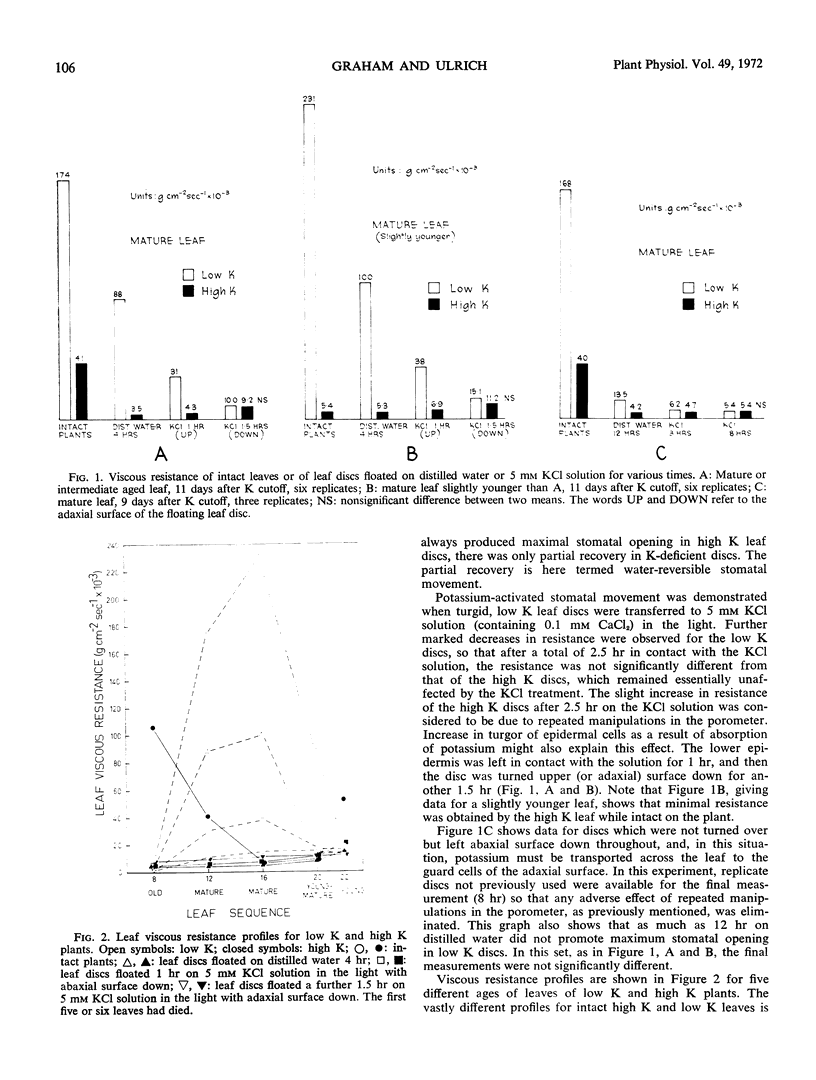
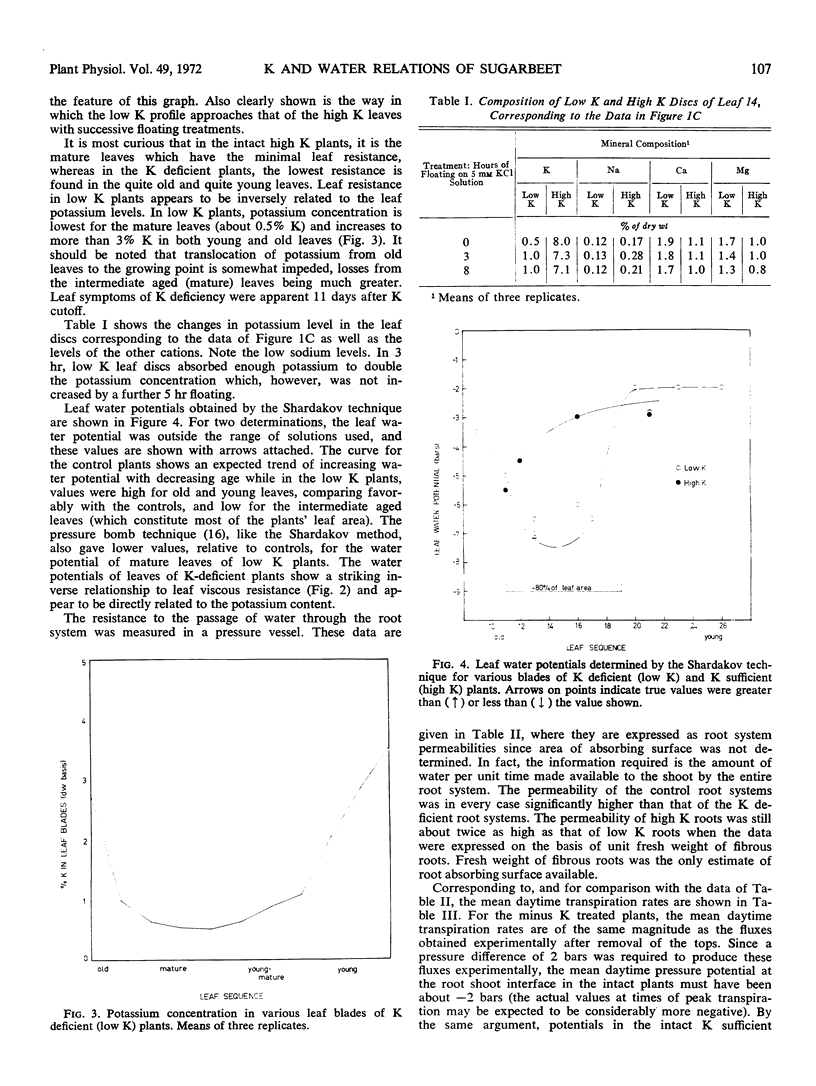
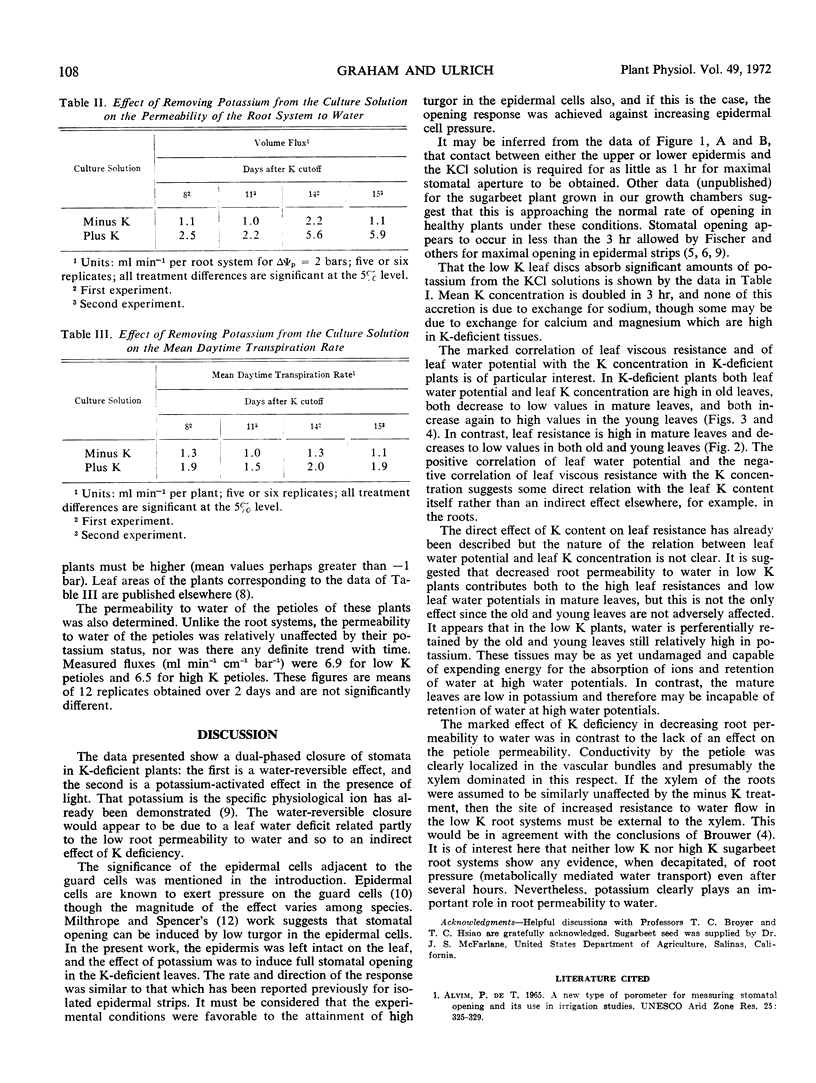
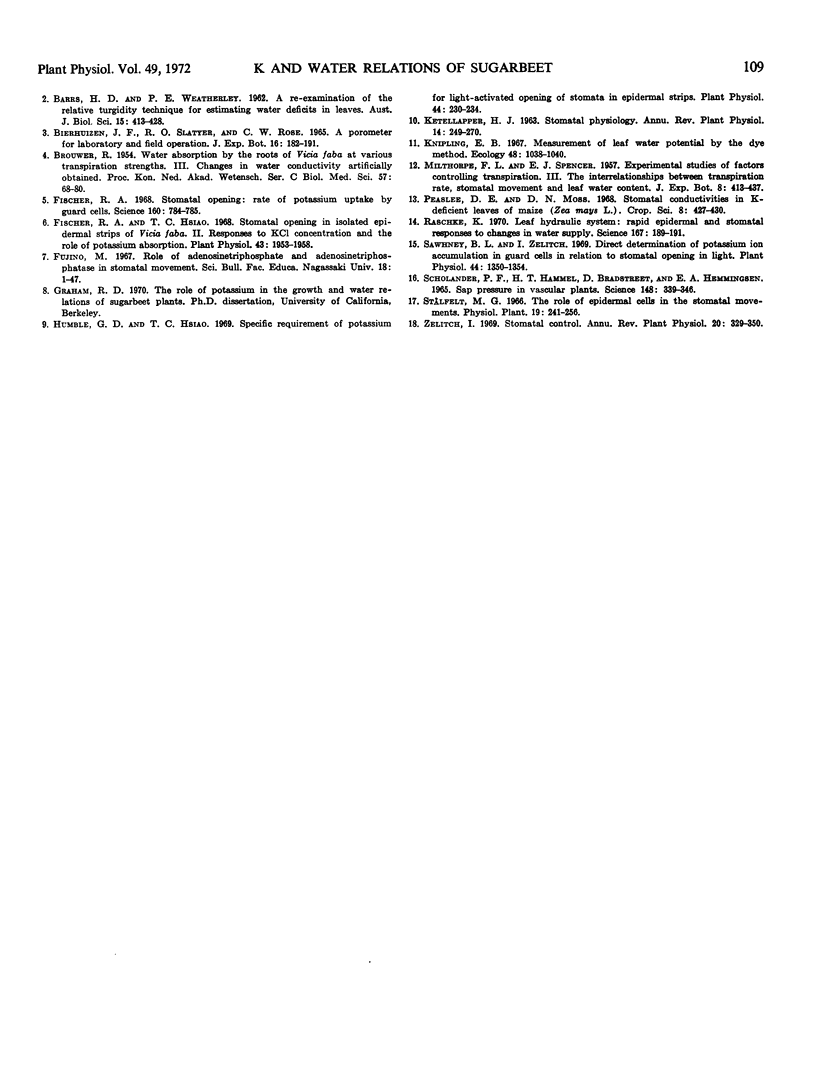
Selected References
These references are in PubMed. This may not be the complete list of references from this article.
- Fischer R. A., Hsiao T. C. Stomatal Opening in Isolated Epidermal Strips of Vicia faba. II. Responses to KCl Concentration and the Role of Potassium Absorption. Plant Physiol. 1968 Dec;43(12):1953–1958. doi: 10.1104/pp.43.12.1953. [DOI] [PMC free article] [PubMed] [Google Scholar]
- Fischer R. A. Stomatal opening: role of potassium uptake by guard cells. Science. 1968 May 17;160(3829):784–785. doi: 10.1126/science.160.3829.784. [DOI] [PubMed] [Google Scholar]
- Sawhney B. L., Zelitch I. Direct determination of potassium ion accumulation in guard cells in relation to stomatal opening in light. Plant Physiol. 1969 Sep;44(9):1350–1354. doi: 10.1104/pp.44.9.1350. [DOI] [PMC free article] [PubMed] [Google Scholar]
- Scholander P. F., Bradstreet E. D., Hemmingsen E. A., Hammel H. T. Sap Pressure in Vascular Plants: Negative hydrostatic pressure can be measured in plants. Science. 1965 Apr 16;148(3668):339–346. doi: 10.1126/science.148.3668.339. [DOI] [PubMed] [Google Scholar]


